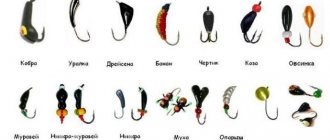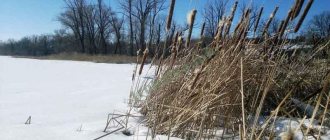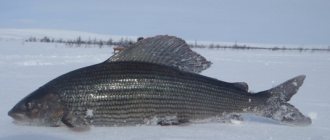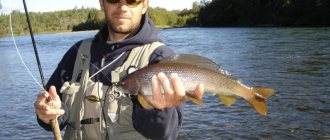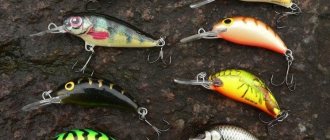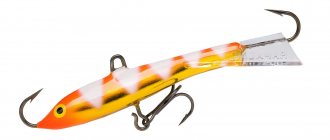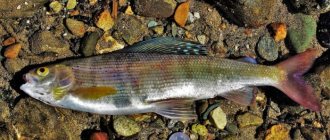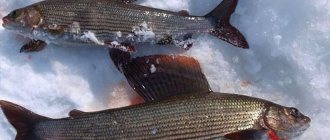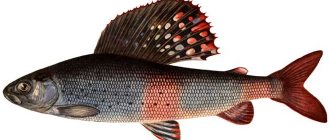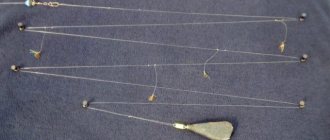A fish such as grayling is considered not only a desirable catch, but also very valuable. It is difficult to catch him, because he is very playful, but the process itself brings great pleasure. Fishing is much easier in winter than in summer, so ice fishing for such trophies is very popular.
In most cases, jigs are used as bait. They are the best at luring fish, so they are considered the most catchy. There are a huge number of them in different shapes, sizes and colors. Each model has its own advantages and disadvantages, but all of them are capable of luring and giving the fisherman a truly desired and large trophy.
Features of gear for catching grayling in winter with a jig
The size and shape of the rod for fishing grayling with a jig practically does not matter; you can take any model. The most important thing is that it is easy to operate and that it is durable. There are a few simple rules that will help you choose gear for fishing with this bait:
Nod
It is better to take a hard and long one, with a large amplitude of vibration. He will be able to quickly respond to any changes and signal the start of a bite.
fishing line
The choice of fishing line should be taken seriously, because grayling is a rather shy fish, and if it notices the fishing line, it can swim away. If the water is clear, the fish can easily see the thick line. Therefore, for ice fishing, it is best to take fluorocarbon with a diameter of 0.12 mm. It will be able to withstand a weight of up to 2 kg, and will cope with its task. If the hunt takes place in small bodies of water or in a small river, then the thickness can be increased slightly.
Hook
They should be chosen with a long fore-end to make it easier to wind threads or wool. The size depends on the size of the prey, the best option is No. 3-6.
Nozzle
Fishermen use caddisfly, bloodworm or burdock larvae as live bait. Also, some people use mormysh.
The Best Time to Fish for Grayling
So, firstly, grayling can only be successfully caught when it is light. Moreover, biting activity can be different due to the quality of illumination of the reservoir, that is, cloudy, sunny or cloudy. The reaction of grayling varies.
In clear, sunny weather, when the atmospheric pressure thermometer is off the charts (high), the most promising time for catching grayling is in the morning with sunrise, and in the evening, when it is approaching sunset.
In clear weather , during the day, except for the morning and evening hours, grayling bites very sluggishly and is practically not caught;
In cloudy weather , it can be successfully caught all day, from morning until evening.
In winter, with the formation of the first ice, grayling loses a little of its caution, and is practically not afraid of noise from the movements of the fisherman on the ice, and from drilling holes. But despite this, the predator is very sensitive to light and tries to avoid open holes.
Thus, experienced fishermen, even in cloudy weather, always darken their holes by sprinkling them with snow. After this, the fish approaches the fishing point without much caution, and the grayling bite increases significantly.
Features of jigs for grayling
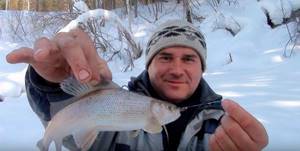
In order for your fishing to end successfully and with a rich catch, you must take into account the model of the chosen jig, color, size and shape.
After all, these are very important indicators on which the success or failure of the entire process depends. If the chosen bait looks unappetizing or is lost against the background of the water and bottom, then the fish will never be tempted by it and time will be wasted.
Form
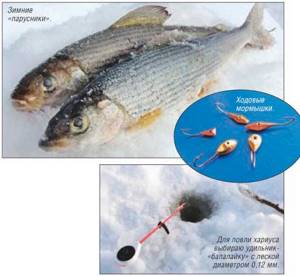
Grayling responds best to jigs, which in appearance resemble a fusion of a jig and a fly. They are very catchy. Also, slightly flattened or flat baits work very well. They sink to the bottom smoothly, thereby attracting the attention of fish.
And they play very interestingly, quite realistically resembling drowned insects. You can take absolutely any form - the main thing is to play correctly and perform smooth and careful movements. Drop-shaped or oblong-shaped jigs performed well.
A jig in the shape of half a pellet with a brightly colored half of the body showed a very good result. Grayling loves it very much, so using it is almost a win-win option.
Color
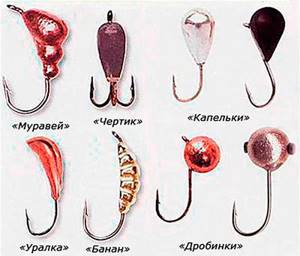
You can take any color. You can try experimenting and see which color will best attract prey. Typically, the color is chosen depending on the body of water and the color of the water itself.
If it is dark and cloudy, then you should take light shades so that the jig does not get lost in the background and is noticeable. When the water is clean, transparent and the hunting is not very deep, then you can take darker models, they will stand out very favorably and will be able to interest grayling.
Of course, it is better to take natural colors - sand, dark red, yellow, gold, red, dark gray. But sometimes grayling prefers bolder colors - green, red, purple, blue. It all depends on his mood, so it’s better to take several different models with you and change them.
The best colors for fishing are:
- Yellow
- Red
- Black
Material
A variety of metals are used as manufacturing materials: copper, tungsten, tin, aluminum, copper. They are taken as a basis, with multi-colored threads, wool and even multi-colored feathers tied to them. All this allows you to look more attractive and provoke the fish to attack.
How to catch grayling in winter?
Grayling fishing in winter is somewhat reminiscent of perch fishing. Grayling responds well to playing with a jig or vertical spinner. Also, if the bite is inactive, replanting animal baits can save the situation.
Animal Baits Used for Grayling Fishing in Winter:
Bloodworm;
Burdock;
Small red worm;
Maggot painted red.

As for the equipment, it should be quite sensitive and finely tuned. It should be remembered that the fish that pecked, but was not detected, or you were late with hooking, will not soon repeat its attack.
The rod should be as light as possible and have a long nod for better quality and amplitude of the bait. And this is regardless of the type and weight of artificial bait. The fishing line is mainly used monofilament 0.12 - 0.14 mm, but in rare cases thicker ones are used.
Models of the most catchy jigs for grayling
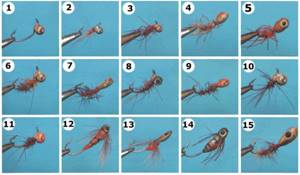
Fishing with jigs is considered very successful, because grayling really loves such bait and always rushes to it. The choice of model depends on the fishing location, weather and time of year.
But, regardless of this, there is a whole set of baits that will always work under any conditions. They have been tested by more than one fisherman, and always work flawlessly and at full capacity.
The best models are:
- Tricolor Spandex Cargo Fly;
- Cargo fly "Orange Braid";
- Cargo fly "Caddisfly";
- Cargo fly "Shitik";
- Cargo fly "Underwater World".
Usually, fishermen prefer not to buy, but to make their own baits. They come in a variety of shapes and are decorated with all sorts of materials to make them more attractive.
Do you need bait for Winter Grayling Fishing?
Feeding the hole always has a positive effect on the grayling bite, regardless of what bait and fishing method you use. Since grayling is mainly caught in strong currents, feeding the holes should only be done with a feeder. It is also important that the feeder cell is not too large so that the feed does not wash out too quickly.
To feed grayling, use small bloodworms or jigs cooked in salt water. Also, ordinary cottage cheese is a very effective bait. A cloudy spot from cottage cheese perfectly lures grayling to the fishing point.
They feed the fishing spot usually like this:
Drill a hole 2 - 3 meters upstream;
Fresh cottage cheese is hammered into the feeder and lowered to the bottom.
In some cases, when cottage cheese is used as bait, you can increase the quantity and quality of bites by attaching a jig (fly), a small white foam ball, to the forend.
This article describes only brief and superficial aspects of catching such a beautiful fish as grayling. Don't ignore the video on winter grayling fishing.
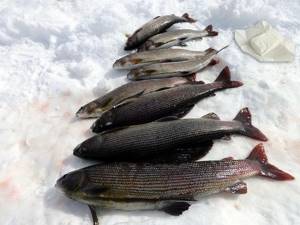
Playing with a jig
To hunt for grayling you need to play the game slowly and smoothly. To do this, you should pay attention to a heavy model, weighing more than 1.5 g, made of tungsten. Fishing technique is very important, because simply lowering the bait to the bottom is not enough, you need to be able to attract the attention of future prey.
Sometimes, wiring can play a decisive role. The main feature of the game is the smooth and slow rise of the bait from the bottom. It needs to be raised 5-6 cm and smoothly lowered back. The bite can begin at the moment when the jig smoothly sinks to the bottom.
For greater efficiency, it is worth checking all layers of water in search of fish. This should be done with smooth movements, shaking the bait a little. If you play the game this way, the bite will look like a hook. After several jerks, you need to hook so that the prey does not run away.
Which fishing rod to choose
A float rod is good in reservoirs where the water does not freeze for fishing from the shore. Use hooks or artificial flies with worms or larvae.
Nodding fishing rod. The basis is a strong rod, 30-40 cm long. Choose a hard nod to give a signal about the beginning of a bite in strong currents. The diameter of the fishing line is increased to 0.2-0.25 mm. The attachments for fishing with a nodding rod are bloodworms, maggots, and worms.

Spinning. You can fish for grayling in the summer using a spinning rod. You will need an ultralight rod up to 2.5 meters long. Give preference to fishing line with a diameter of 0.10 mm. You should choose a spinner or wobbler.
Reviews from fishermen about catching grayling with a jig
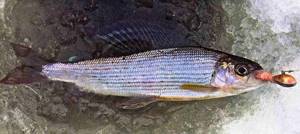
User Andrey writes that a jig for grayling is the best option, because he loves it very much and always rushes. Fishing with it is very simple and does not require special knowledge, which is why I chose a jig. I always take it with me fishing, there’s a bite, and I catch some big fish. Sometimes you have to wait a long time, but if you change the hole or change the jig to a brighter one, the problem disappears. Grade:
User Dmitry writes that this bait is his favorite, especially for winter fishing, because in the summer it is better to fish with animal or plant baits. In winter, catching grayling is very difficult, but jigs make the task much easier, because they are very attractive and really work perfectly. Grade:
User Nikolay writes that he often uses such baits when fishing. Indeed, with them, grayling is caught with a bang, sometimes you don’t even have to wait. I threw it in, played a little and the bite started. It has never happened before that there was stagnation; if one model does not work, then by changing it, the process goes like clockwork. Grade:
User Alexey writes that he really likes to catch grayling and has recently started using everyone’s favorite jigs. At first it was a little difficult, because you need to play correctly and not make sudden movements, but over time I got used to it, and the process began. I always return home with a cage full of spoils. Grade:
User Ivan writes that he has used it only a few times, and the results are indeed very good. It bites regularly and it’s quite easy to fish, it’s not a bait, but everyone’s dream. Grade:
User Dmitry writes that the jig works well. Grayling was caught, but other fish also bit, rarely, but sometimes I caught perch. There are different models in the arsenal, I tried everything, red and yellow suit the colors best, grayling loves them very much. Grade:
User Lesha writes that he doesn’t use store-bought jigs, he prefers to make them with his own hands, it’s cheaper and more catchy. The results are very different, sometimes you had to return without anything, and sometimes it was constantly biting, you just have time to pull it out. It all depends on the place of hunting, the degree of hunger of the fish itself, and the shape of the bait. Grade:
Catching grayling with a jig is not only very simple, but also exciting. This process can give a lot of pleasant emotions and lift your spirits. Especially if the catch is large and pleasing to the eye. The process itself is quite simple and does not require impossible or complex tasks; the main thing is to play the game smoothly, measuredly and slowly, and not to forget to probe all layers of water in search of the best place.
What gear and what jigs are used to catch grayling?
The gear used to fish for lenka during ice fishing is very simple: a short fishing rod, no longer than forty centimeters, equipped with a reel or even a reel. Ten to thirty meters of monofilaments with a cross section of 0.18-0.25 mm are laid on it. If you increase it, the game of bait will lose its attractiveness, as we wrote about in the article “The desired trophy: a predatory whitefish on a jig.”
It is advisable to use a nylon whip, which will dampen sudden jerks when fishing for this fighting fish. The guard is selected based on the mass of the jig; if the ratio is chosen correctly, the necessary wiring is provided. By the way, experienced fishermen even at home pair nods with baits, and if the latter is lost, they also change the bite indicator on the ice.
The best jigs for grayling have their own characteristics. They should be large, with an elongated lead weight. The fish are especially willing to attack models that have a metal plate at the top and a lead solder located at the bottom. Nickel silver, stainless steel and silver are used quite rarely.
Large hooks from 6 to 12 numbers are soldered into the weight and placed at a certain angle. If the body is small, the hook seems to be its continuation. Experienced fishermen are able to seduce fish with artificial bait that imitates bloodworms or maggots.
Of the animal species, the caddisfly is considered the most successful; it is easy to catch in non-freezing reservoirs. If you stir the stones, you can find goose and stoneflies under them. If possible, you should take salted salmon caviar, shrimp and worms with you from home.
Jigs for grayling can be equipped with a bunch of red or yellow woolen threads tied to the fore-end. It should be borne in mind that when biting a fish weighing more than three kilograms, a thin hook is capable of straightening, since the hard mouth of a predator and its fighting character are capable of much.
In most cases, a homemade gatehouse is installed using scaffolding with a cross section of 0.5 mm. Such a bite alarm has optimal elasticity, and constantly freezing ice is easy to clean. For better visualization, it is painted in bright colors or strung with cambric.
What bait does the predator prefer?
Summer jigs for grayling lenok are often used instead of a sinker, and a hook is tied to the outgoing end of the line. In this case, a bark beetle larva is threaded onto the jig, and a worm is threaded onto the hook. Fishing is carried out from the shore using wire. The color of the bait does not play a significant role, although anglers adhere to the principle:
- on dark soil, for example, muddy, a light jig is knitted;
- if the bottom is rocky, a dark yellow sinker is more appropriate;
- in sandy areas, the most catchy ones are red models.
Anything can serve as a bait - a worm, a fly, a horsefly, a caddisfly, a fish takes everything equally successfully. You can fish both from the shore and by wading. Often, a fisherman deliberately muddies the water under his feet; on the one hand, the grayling stops seeing him, on the other, a cloud of suspended particles attracts his attention.
From August until the freeze-up, the nature of fishing changes somewhat. The water level in the rivers drops significantly, it becomes so transparent that the slightest pebble at the bottom can be seen. Grayling, which has excellent eyesight, sees everything perfectly. At this time, you have to hide behind any vegetation on the shore, carefully creeping up to the water's edge.
They move in search of a promising place upstream. As for the equipment, the thinnest line with a small float is used. Summer jigs for grayling are tied to the smallest ones, red or black in color. The predator gives preference to an ordinary housefly or a burdock moth larva, which is easy to find in burdock seeds.
In summer they try to use natural baits:
- Insects that live near a body of water. Grasshoppers, flies or flies are strung on the hook. Good bites are observed in prolonged hot weather.
- The immediate inhabitants of the river are various invertebrates. Since they are familiar to grayling, they will not arouse suspicion.
- In spring and summer it often bites on earthworms. This option is optimal when fishing with a float rod.
When choosing natural bait, it is worth first studying the features of the reservoir where you plan to fish in order to understand what the fish can feed on here. In any case, it is better to have a sufficient assortment of baits, since grayling is capricious, and it is difficult to guess its preferences.
